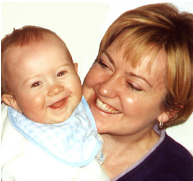Developmental Psychopaths
Jacobus Reicher
...Without exception, the histories of our patients reveal trauma during their early years, e.g. separation from mother-figures; uncaring, neglect and deprivation; inconsistent disorganized family patterns.
Real separations are rather easy to determine. Their invalidating influence during the first years of life is abundantly proven. The most severe consequence is the feeling of the unreliability of others and of the self. The resulting prejudice is difficult to correct, and impresses itself as a delusion: "I am unacceptable and unworthy of being loved by anyone. Other people must be distrusted." The basic assumptions are: basic insecurity and basic distrust, and this disturbs the process of socialization...
...They have learned to observe, to assess and to appraise people and situations and are talented in evaluating the needs and wishes of other people. They are capable of discovering the fears and weaknesses of their fellow-beings. As children, they are clever, precocious, lively and roguish, and develop into quick appraisers, first-class judges of human nature and cunning manipulators of the situation-at-hand. At first sight one is impressed by their apparent adaptability. This alertness, reactability and switchability is related to an inability to form attachments and relationships. Their reality-testing seems excellent, in that they rapidly change their attitudes. Their distorted judgement is not readily observable. Relationships last as long as the partner continues to remain interested, attentive, and admiring. They do not attach themselves out of fear for separation, and feel safer as loners, choosing to trust no one, rather than to risk the anticipated vulnerability which a relationship brings...
... Separation and threats of separation have their strongest influence between the ages of six months and three years...
Reprinted with permission from the International Journal of Law and Psychiatry, Vol 2, page 98, 1979
